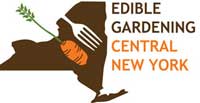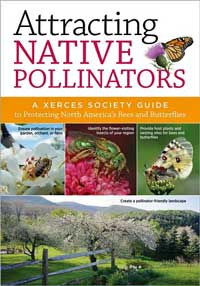Watershed Community Connections
|  | |
An encore public forum
Monday, June 18
5:00 - 8:30 pm
Genesee Grande Hotel
Tiffany Ballroom
1060 E. Genesee St.
Syracuse
Open to the public. Free parking. Refreshments served at 5:00 pm; meeting begins at 5:30 pm.
Join the continuing discussion shaping the future of the Onondaga Lake Watershed
|
| Learn more about the plants and animals in our area |
 | Our native blue flag iris
(Iris versicolor) |
|
Dave Spier, naturalist, profiles the animals and plants--both native and non-native--found in the northeast, and particularly those found at the Montezuma Audubon Center and in the Adirondacks. Explore his blogs to learn more about the many plants and animals in our region. Adirondack Naturalist - currently featuring the beautiful pink lady's slipper Northeast Naturalist - currently featuring green herons |
Baltimore Woods Summer Nature
Day Camp
|  | Summer time is for playing outside at Baltimore Woods. Groups of children led by experienced counselors hike, explore, play, and learn about the natural world during these week long day camps.
There are a variety of camps for these age groups: ages 5-12, 4-5, and 13-15.
New summer camps include a Nature and Art camp for 4th-5th graders and themed Voyager camps for 5th-8th graders.
Register early! Space is limited, and they fill up fast.
For more information or to register, visit the Woods website or call 673-1350.
|
Learn by doing! Help maintain the zoo garden
|
 | | The zoo's habitat garden |
|
One of the best ways to learn anything is work alongside experts and other learners like yourself. A great way to learn more about habitat gardening and native plants is to volunteer to help maintain the habitat garden at the zoo. Contact Kate Woodle if you're interested. The "crew" meets Sundays 2 - 4 pm.
|
| Our Habitat Garden |  |
Visit Our Habitat Garden website for information on providing habitat, earth-friendly gardening practices, plants, and various creatures here in Central New York.
|
|
Join HGCNY!
|  |
Becoming an official member of HGCNY is easy: just join Wild Ones! When you're a Wild Ones member, you're automatically an official member of HGCNY. |
| HGCNY on Facebook |
As as more of us participate on our Facebook page, this will become a useful resource for asking (and answering!) local HGCNYers' questions about habitat gardening. |
Our Edible Garden recently updated with more resources!
|  | | Visit OurEdibleGarden.org to see an example of a Central New York edible garden, the perfect companion to your habitat garden. |
| Interested in Edible Gardening? | 
|
If you'd like to get information on Edible Gardening CNY, just email John to find out about edible gardening tours and monthly programs. Free and open to the public! |
|
Greetings!
 | | Explore a habitat garden! |
It's now time for our summer Show Me, Help Me tours, being organized by Linda Rossiter and Randi Starmer.
As the name "Show Me, Help Me" implies, these aren't necessarily finished, formal gardens, but are examples of habitat gardens from relatively new to fairly mature gardens. And every gardener has things to "show" that are working well, and areas where they'd like "help" with some problem-solving suggestions.
Show Me, Help Me Tours
The first tour will be at Dave and Beth Mitchell's garden. We've enjoyed touring their yard in previous years and seasons, watching it develop year by year into a incredible habitat garden.
Their tour this year will be on Sat. June 30 at 10:00 am. Directions are on the HGCNY website.
Other tours scheduled this summer include one on Sat. July 28 at the zoo's habitat garden with Kate Woodle as our guide, and one in August at Linda Rossiter's house in Fulton.
 My own informal tours My own informal tours
The schedule for this year's tours (BUT SEE IMPORTANT NOTE BELOW):
Sat. June 16: a Habitat Garden tour at 8:00 am, an Edible Garden tour at 9:00 am, and a second Habitat Garden tour at 9:45 am.
Sat. June 23: (same schedule as above)
Come to any or all! Directions
IMPORTANT NOTE: Due to the unpredictable nature of a new grandson's arrival date, please check the HGCNY website home page before coming to make sure the tour hasn't been canceled! (There will be a notice only if the tour has been canceled.)
~ Janet Allen
|
|
 National Pollinator Week June 18 - 24 Celebrate the 6th annual National Pollinator Week by helping the pollinators in your own yard.
Important things you can do are:
1) Plant native nectar plants and avoid hybrid plants, especially those with doubled flowers. Those hybrids are created for people, not pollinators, and often have little or no nectar or pollen -- or even fragrance.
2) Provide bee blocks, dead logs or snags, and leave some bare patches of ground for nesting.
3) Reduce or, preferably, eliminate pesticides. It IS possible to have a beautiful garden without chemicals, and it will be healthier for people, too!
For more specific information, check out the bees and their habitat needs in Our Habitat Garden.
 And learn more about pollinators And learn more about pollinators
The book Attracting Native Pollinators by The Xerces Society is highly recommended. Not only is it very attractive and enjoyable, it provides very good information about pollinators and how you can help them. One of the best guidebooks I've seen of any kind!
It's available at the public library, or it can be purchased directly from The Xerces Society or from other bookstores.
|
|
Featured insect: Fireflies
 | Firefly: Top image is illuminated by flash; bottom image taken only with self-emitted light
Photo: Creative Commons EmmanuelM |
~ From Firefly Watch, Boston Museum of Science:
Why Do Fireflies Flash?
Male fireflies flash while patrolling an area.
If a female is impressed, she answers him by flashing from a perch, either on the ground or at some spot above ground, like a shrub.
It is up to the female to decide if she wants to mate with a particular male; if she doesn't respond to his flash, he cannot find her in the dark.
Different Fireflies, Different Flashes
To most people, the flash of one firefly looks the same as another. However, with the possibility of many different species living in a meadow at the same time, each firefly needs a method of picking out his or her own kind.
Each species of firefly has a fairly distinctive flash pattern, which each differ in a number of ways:
- Color
- Length
- Number of flashes
- Interval of time between flashes
- Time of night they are active
- Flight pattern
Be a Firefly Watcher this summer!
It's easy to participate in Firefly Watch. Basically, Firefly Watch wants to know if you have fireflies in your yard this summer (or in a nearby field if you don't have a yard). Even if you don't see fireflies, your data is valuable.
Minimal Time Commitment
Firefly Watch hopes you'll be able to spend ten minutes checking your yard for fireflies, one evening a week throughout the summer. But any information you can send them is valuable, as long as you fill out the observations form, and upload the results.
This is a great family project! Read more...
|
|
Plants and climate change
 A June 2012 study has found that plants previously thought to be "stable" are actually responding to climate change. A June 2012 study has found that plants previously thought to be "stable" are actually responding to climate change.
The study, published in the Proceedings of the National Academy of Sciences, found that many wild plant species hadn't been blooming earlier and so they didn't seem to be responding to warmer and earlier springs.
However, the plants actually were responding to warmer winters by delaying flowering, then were speeding up flowering in the earlier spring. The result was little change in flowering date, but this masked important changes in plant physiology.
"Right now, these species appear to have not changed much over time," said Wolkovich, co-author of the study, "but all of our understanding of basic plant physiology suggests they will shift their flowering dramatically in the future."
Read more from Science Daily...
Mismatches between plants and animals
Another June 2012 study studied the glacier lily, which flowers early in the spring when the first hummingbirds and bees appear. Unfortunately, it's now flowering earlier and is withering when the hummingbirds arrive from their long flight from Central America.
If current trends continue, researchers predict that within 20 years, the hummingbirds will have missed the first flowers and their nectar entirely.
Read more from Science Daily ...
|
|
Our Native Plant Shopping Guide tells you where to find native plants
 | |
(Click image to download)
|
To help you find native plants in CNY, we've compiled a list of plants offered by several local nurseries. REMEMBER, nurseries can sell out of any particular plant, so it's a good idea to call before setting out on your shopping trip! DOWNLOAD: This guide is available online as a free .pdf download. |
|
|
|
|